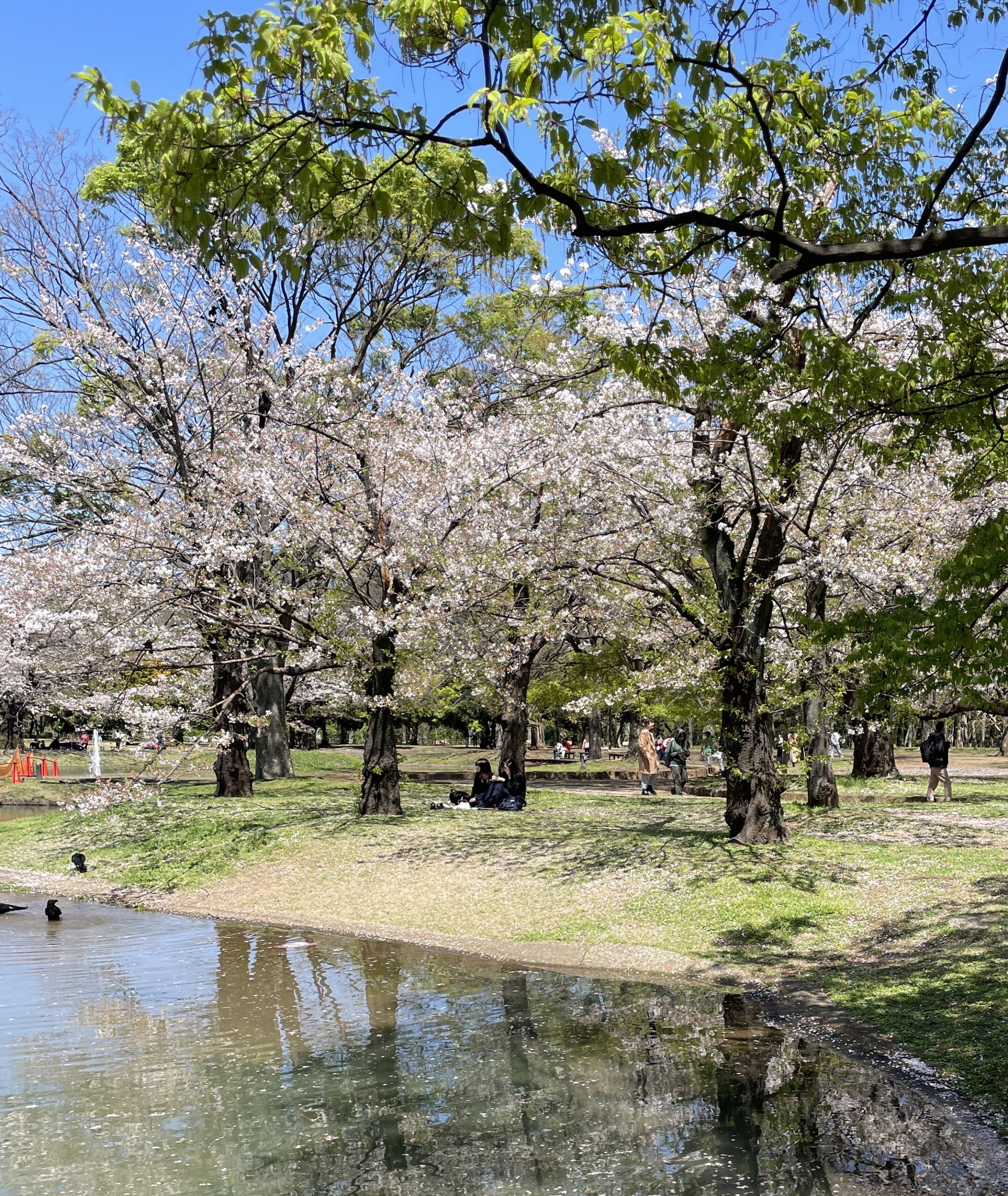Best Time to Visit Tokyo: Month-by-Month Guide
Tokyo isn’t just one of the world’s largest cities; it’s a place where each season feels like an entirely different experience.
From cherry blossoms blanketing parks in spring to neon-lit summer festivals, crisp autumn foliage, and cozy winter illuminations, choosing when to visit can shape your trip as much as where you go.
This guide breaks down the best time to visit Tokyo, month by month, so you can plan your trip around what matters most, whether that’s perfect weather, peak cherry blossom season, or avoiding the tourist crowds.
Spring in Tokyo (March – May)
Spring is widely considered the best time to visit Tokyo. Cherry blossoms (sakura) bloom across the city, transforming parks and streets into pink-and-white wonderlands.
The average temperatures range from about 10°C in March to a pleasant 20°C by May, making it ideal for exploring on foot.
Expect higher prices during the peak sakura bloom (usually late March to early April) and again during Golden Week in late April or early May, when domestic travel surges and hotels book up quickly.
For some further context regarding Golden Week, it is worth noting that Golden Week in Tokyo is a cluster of national holidays from late April to early May, during which many locals take vacation at the same time.
It includes holidays like Showa Day, Constitution Memorial Day, Greenery Day, and Children’s Day, creating one of Japan’s longest holiday stretches.
During this period, Tokyo frequently hosts special events, seasonal sales, and festive decorations, creating a lively, celebratory atmosphere throughout the city.
Tokyo buzzes with life in spring: hanami (cherry blossom viewing) parties fill parks like Ueno and Yoyogi, department store rooftops open beer gardens, and festivals kick off across the city.
Pack layers for cooler evenings, and book accommodation early to secure prime views of the cherry blossoms.
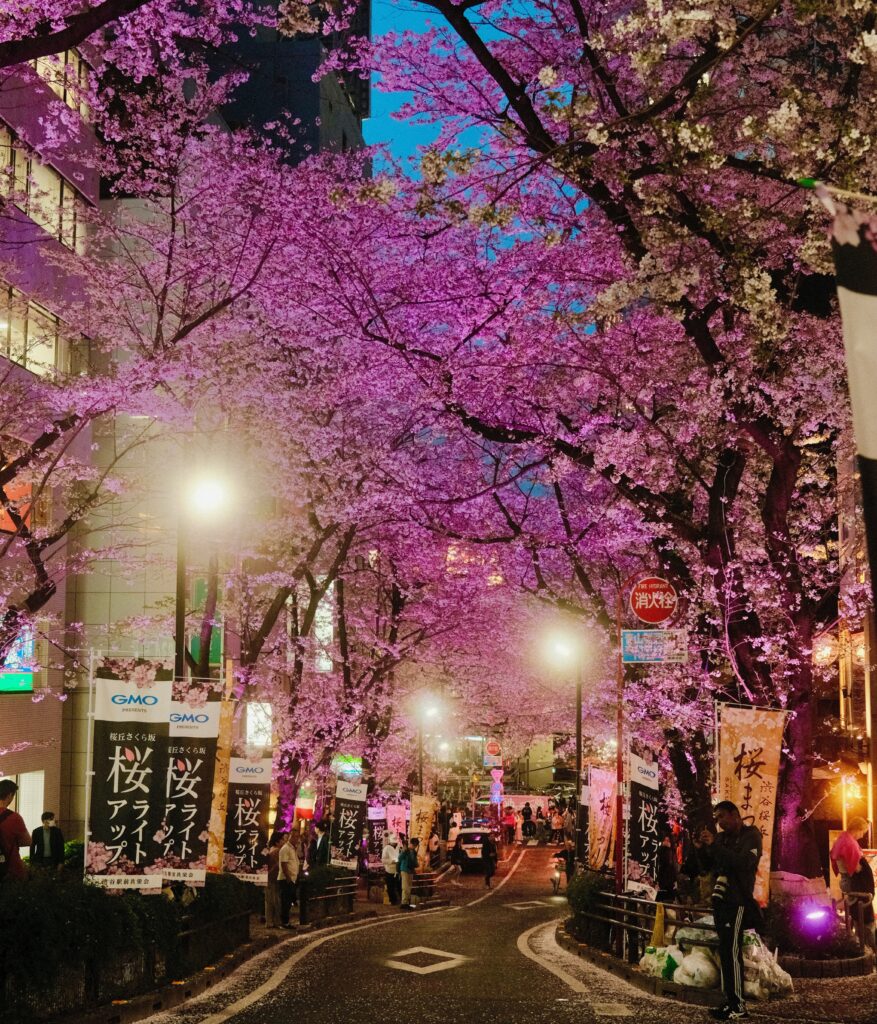
March
March marks the beginning of spring, with temperatures gradually rising to 10-15°C.
Plum blossoms and early cherry trees begin to bloom, turning parks into pastel dreamscapes. It’s a quieter time before the full-on sakura crowds arrive.
Restaurants and shops begin to switch over to spring menus and seasonal decorations, hinting at the excitement of the upcoming cherry blossom season.
April
As spring deepens, April brings peak cherry blossom season in Tokyo. Expect temperatures around 17°C.
Locals and tourists alike flock to famous spots like Ueno Park and Chidorigafuchi to picnic and snap photos under the delicate pink blooms.
Cherry blossom season is absolutely beautiful in Japan, and while it’s on just about everyone’s bucket list, keep in mind that hotel prices rise sharply during this time.
Plan early and be prepared for crowds, but the breathtaking scenery and festive atmosphere make it worth the effort.
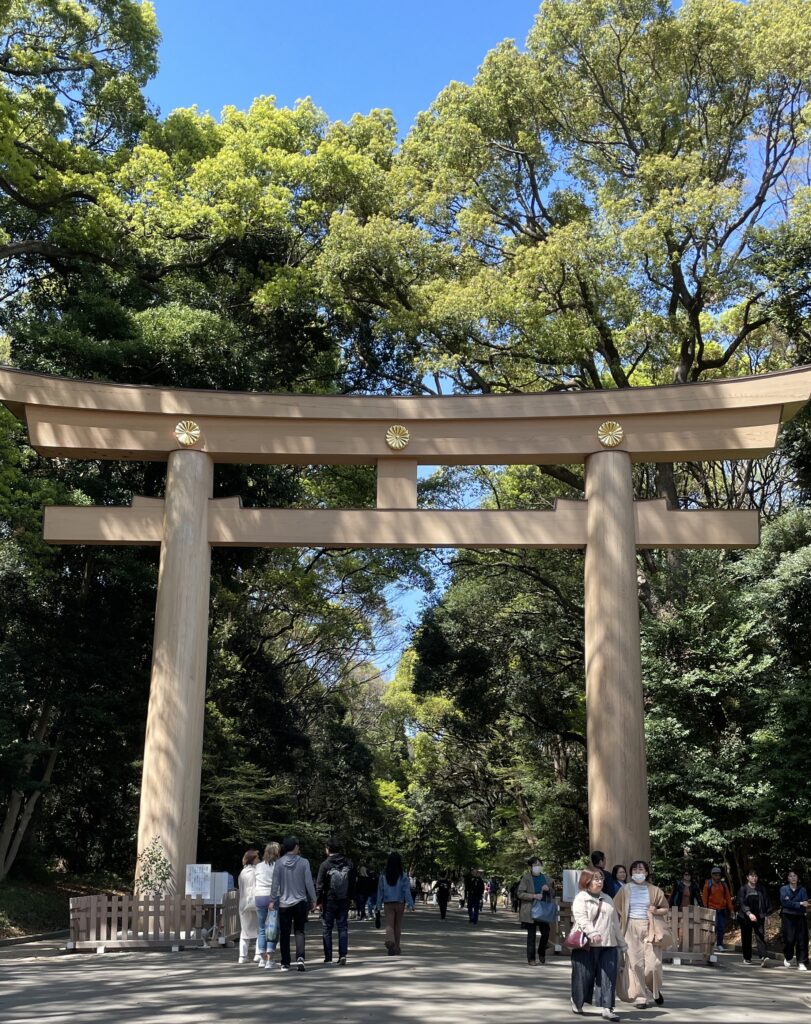
May
Warmer days arrive by May, bringing early summer sunshine and average temperatures ranging from 17 to 23°C.
Tokyo’s parks and gardens burst with vibrant life, perfect for picnics or strolls under fresh green canopies.
After Golden Week, crowds thin and prices ease, making it a comfortable time for both sightseeing and the wallet.
Summer in Tokyo (June – August)
Summer in Tokyo is hot and humid, with average highs around 30-33°C in July and August.
June marks the start of the rainy season, while July and August are peak months for festivals and outdoor events.
Expect vibrant street life, dazzling fireworks displays, and bustling beer gardens throughout the city.
The summer heat can be intense, so take advantage of early mornings and evenings for exploring Tokyo’s top attractions.
June
June marks the start of Tokyo’s rainy season, with frequent showers and humid afternoons.
Average temperatures range from 20-25°C, making it cooler than the peak of summer but still humid at times.
While sightseeing can be damp, the city’s parks and shrines take on a lush, green beauty that’s worth experiencing. Bring a compact umbrella and waterproof shoes, and consider indoor attractions like museums, aquariums, and historic temples when the rain comes down.
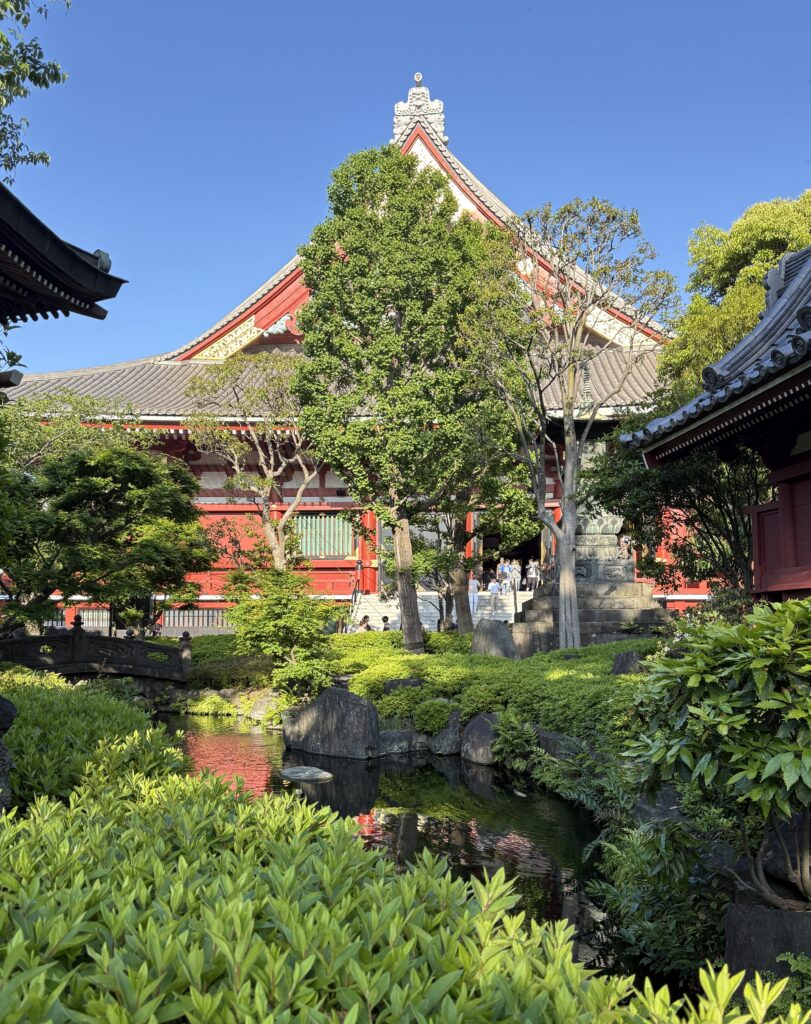
July
July in Tokyo is renowned for its vibrant summer festivals, such as the Sumida River Fireworks, which fill the skies with dazzling displays.
Average temperatures reach 25-31°C, and the humidity ramps up, creating a sticky, sultry atmosphere that can be tough for sightseeing.
Be sure to stay hydrated, take breaks in air-conditioned cafes or shops, and use early mornings and evenings to enjoy outdoor events comfortably.
August
The hottest month of the year, with highs reaching 30-33°C. Obon holidays bring a festive atmosphere, with dance festivals and lantern displays illuminating the city.
It’s often sticky and sweltering, so pack light, breathable clothes and sunscreen. If you can handle the heat, summer fireworks festivals also make August a memorable, colorful time to visit Tokyo.
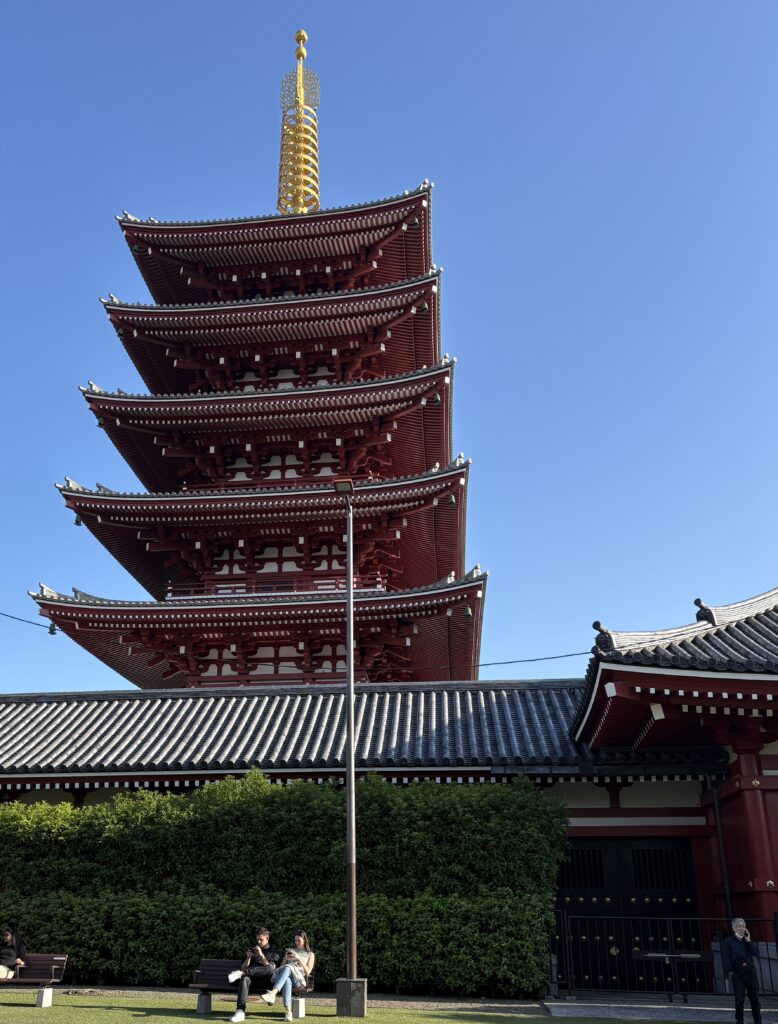
Autumn in Tokyo (September – November)
Autumn in Tokyo is a favorite for travelers. Comfortable temperatures, lower humidity, and the famous fall foliage create postcard-perfect scenes across parks and temples.
Average temperatures in autumn range from 12°C to 22°C. It’s the season when locals and visitors alike flock to gardens, temple grounds, and mountain trails to admire the vibrant reds, golds, and yellows.
This is also when cultural festivals and food events fill the city, showcasing the season’s best flavors and traditions.
It’s worth mentioning that Tokyo’s parks are beautifully maintained, offering clean paths, manicured gardens, and plenty of seating for enjoying the crisp fall air.
During autumn, they transform into vibrant canvases of red, gold, and orange, creating some of the best spots to take in the season’s foliage.
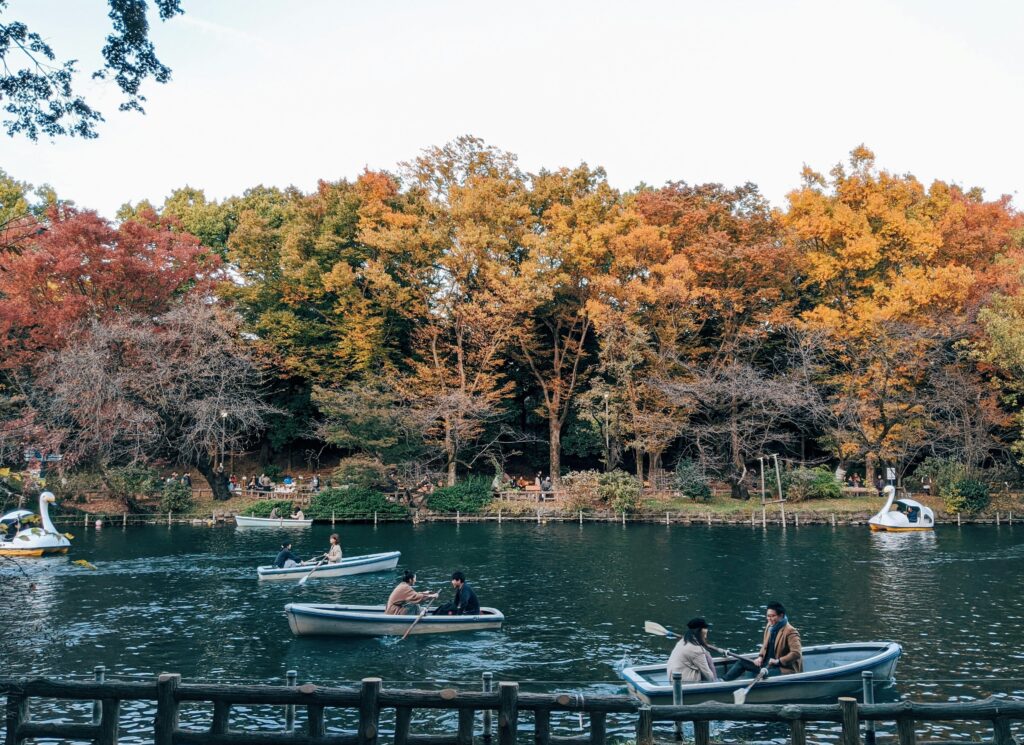
September
September can be unpredictable, with typhoon season peaking early in the month. By late September, however, the skies often clear and temperatures settle at 23-28°C, making for much more comfortable days.
Summer’s heavy humidity fades, and exploring Tokyo’s outdoor attractions, parks, and cultural festivals becomes far more enjoyable.
It’s a transitional month where you can experience both late-summer heat and hints of early fall, so packing layers is a smart choice.
October
October marks the real beginning of Tokyo’s autumn spectacle. Fall foliage begins to appear, especially in parks and temple grounds, as the month progresses.
With temperatures ranging from 16 to 22°C, it’s perfect for walking tours, exploring local markets, or visiting traditional gardens.
The city comes alive with festivals that highlight seasonal foods, cultural performances, and art events, making it a great time to connect with local traditions. Crowds are manageable, and the crisp air makes everything feel fresh and inviting.
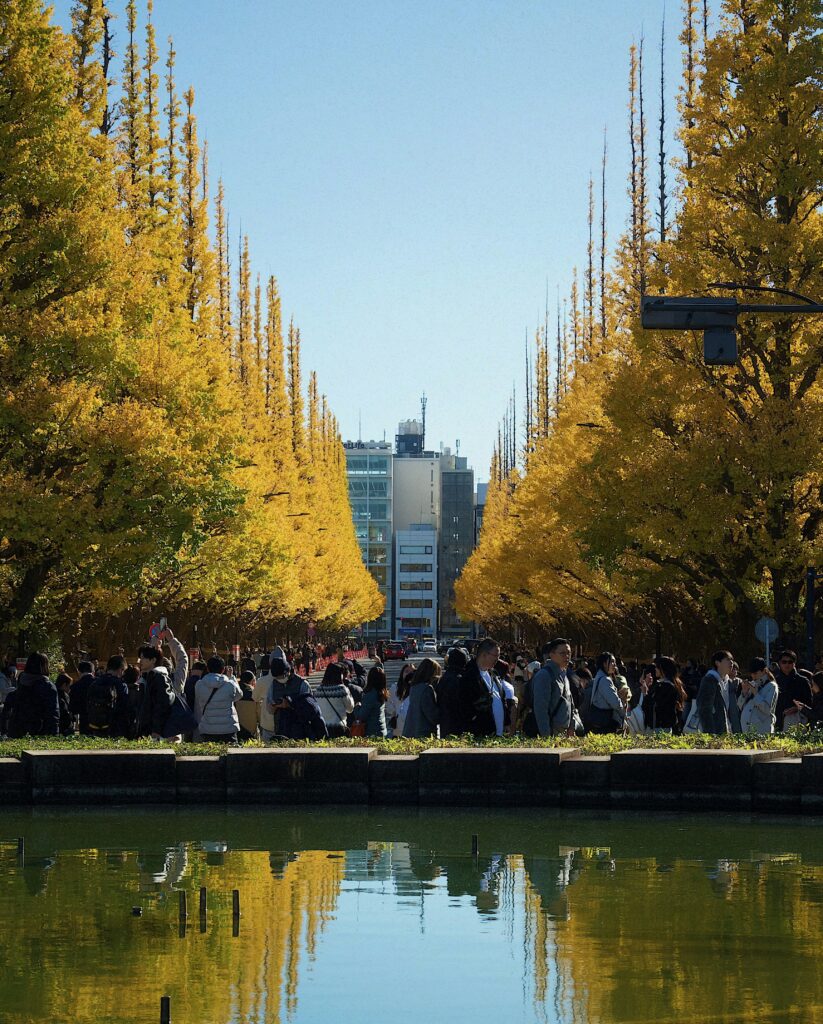
November
Tokyo’s parks explode in reds and golds, with crisp weather averaging 12-18°C. It’s arguably the best month for enjoying gardens and temple grounds.
Fall foliage reaches its peak, creating picture-perfect scenes across spots like Rikugien and Yoyogi Park.
Mild temperatures make it comfortable to explore neighborhoods on foot, from the old streets of Asakusa to the trendy corners of Shimokitazawa.
Winter (December – February)
Tokyo winters are relatively mild compared to other parts of Japan, with average temperatures ranging from 2°C to 12°C.
Expect clear blue skies, dry air, and festive illuminations brightening up the city. While snow is rare, the crisp winter atmosphere is perfect for exploring temples, shopping districts, and enjoying seasonal dishes like hot pot.
Additionally, the crowds are smaller, making it easier to enjoy Tokyo’s best attractions without waiting in long lines.
December
Holiday lights sparkle throughout the city, transforming Tokyo into a festive wonderland.
Average temperatures range from 5°C to 12°C, with crisp days perfect for exploring seasonal illuminations in places like Shinjuku and Roppongi.
Pack layers for chilly mornings and evenings, especially if you plan to visit outdoor markets or enjoy winter festivals. It’s also a fantastic month to try hot street foods and visit onsen hot springs just outside the city.
January
The coldest month, with temperatures dipping to 2-10°C. Skies are usually clear and sunny, making it ideal for crowd-free sightseeing and capturing winter landscapes.
It’s also a great time to soak in an onsen or enjoy seasonal festivals, such as New Year celebrations, which bring a quiet buzz to the city before the rush of spring.
Feburary
Slightly warmer than January but still cool, with temps around 3-11°C. Plum blossoms begin blooming in late February, hinting at spring ahead.
The days start getting longer, giving you more daylight to enjoy Tokyo’s temples, shrines, and neighborhood strolls.
While it’s not quite cherry blossom season yet, you’ll find fewer crowds at major sights and better hotel deals.
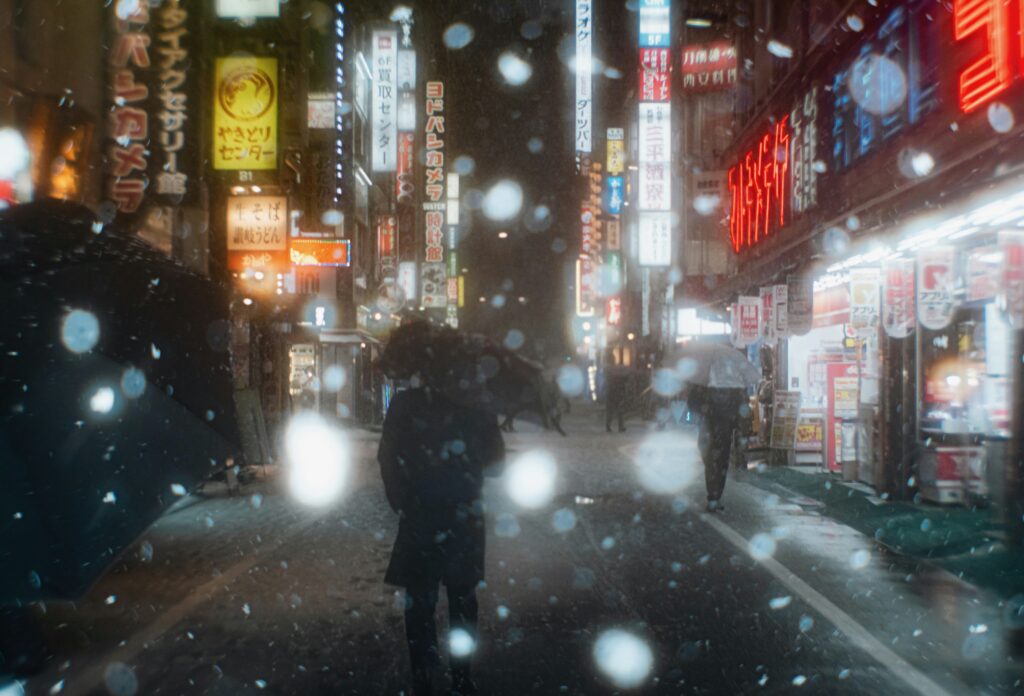
Tokyo Festivals & Events
- Cherry Blossom Season: Late March to early April, Tokyo parks fill with picnickers enjoying the fleeting beauty of sakura. Spots like Ueno Park and Chidorigafuchi transform into pastel wonderlands.
- Sumida River Fireworks Festival: Held in late July, this summer event lights up Tokyo’s skyline with massive fireworks displays, drawing thousands to the Sumida River banks.
- Autumn Festivals: From September to November, smaller neighborhood festivals celebrate harvests with food stalls, taiko drums, and parades. Great for a glimpse of local life.
- Tokyo Game Show: A huge annual gaming expo in September, showcasing new releases, tech, and pop culture. Popular with gamers and cosplay fans.
- Christmas Illuminations & NYE: While not traditional holidays in Japan, December brings spectacular illuminations across districts like Shibuya and Marunouchi. NYE is quieter, but temples like Zojoji host bell-ringing ceremonies to welcome the new year.
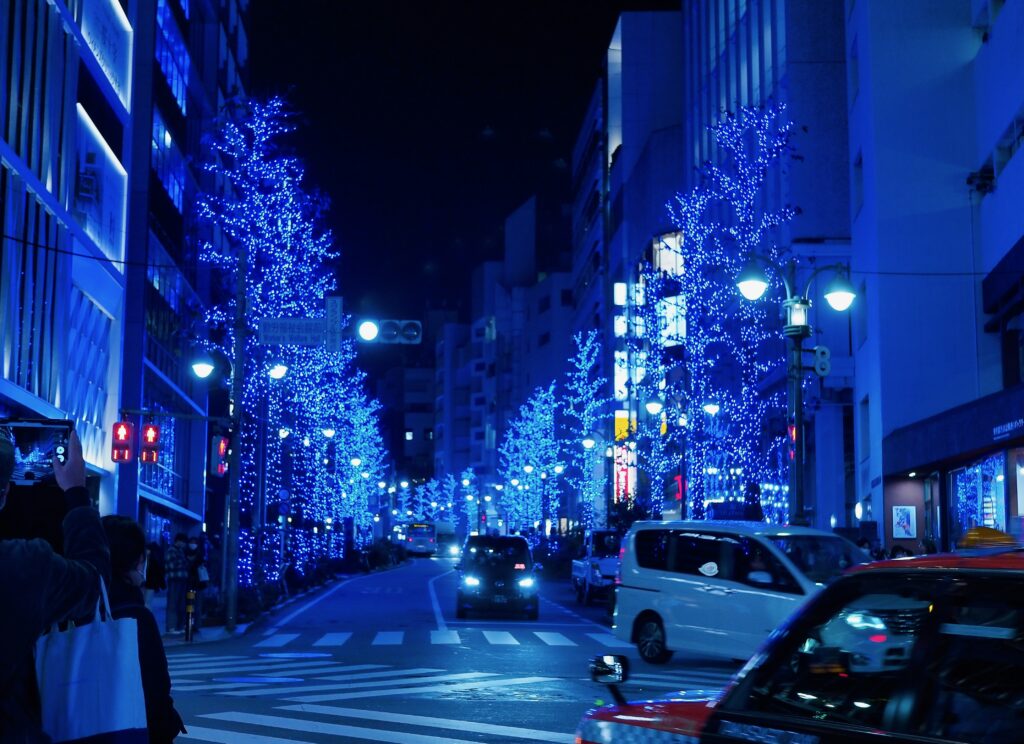
Tips for Booking Flights & Hotels Based on Season
Cherry blossom season (late March – early April):
Book hotels and flights several months in advance, as this is the busiest travel time. Rooms near popular cherry blossom spots like Ueno Park, Chidorigafuchi, and Shinjuku Gyoen fill up especially fast.
Prices also spike during this season, so locking in early reservations is key to getting the best rates and locations.
Golden Week (late April – early May):
Expect high prices and limited availability during this string of national holidays. Hotels and trains fill up quickly as both locals and tourists travel throughout Japan.
Booking accommodations and transportation, such as bullet train tickets, several months in advance ensures better rates and choices, and helps you avoid the stress of last-minute planning.
Summer festivals (July – August):
Hotel rates tend to rise near major festival sites as crowds flock to see fireworks, parades, and street celebrations.
If you’re planning to stay in busy districts like Shinjuku or near riverside areas with large fireworks displays, book accommodations early to secure better prices and a convenient base for the festivities.
Autumn foliage season (November):
This is one of the most picturesque times to visit Tokyo, as parks and temple grounds turn brilliant shades of red, orange, and gold.
It’s a popular season for domestic travelers seeking the best fall colors. Booking early helps you secure better hotel options near prime foliage spots and ensures smoother travel plans.
Winter holidays (December):
While Christmas isn’t a major holiday in Japan, it’s still a festive season in Tokyo, with light displays and busy shopping districts.
Hotels in these popular areas often fill up quickly, so it’s wise to book early if you’re planning to visit during this period.
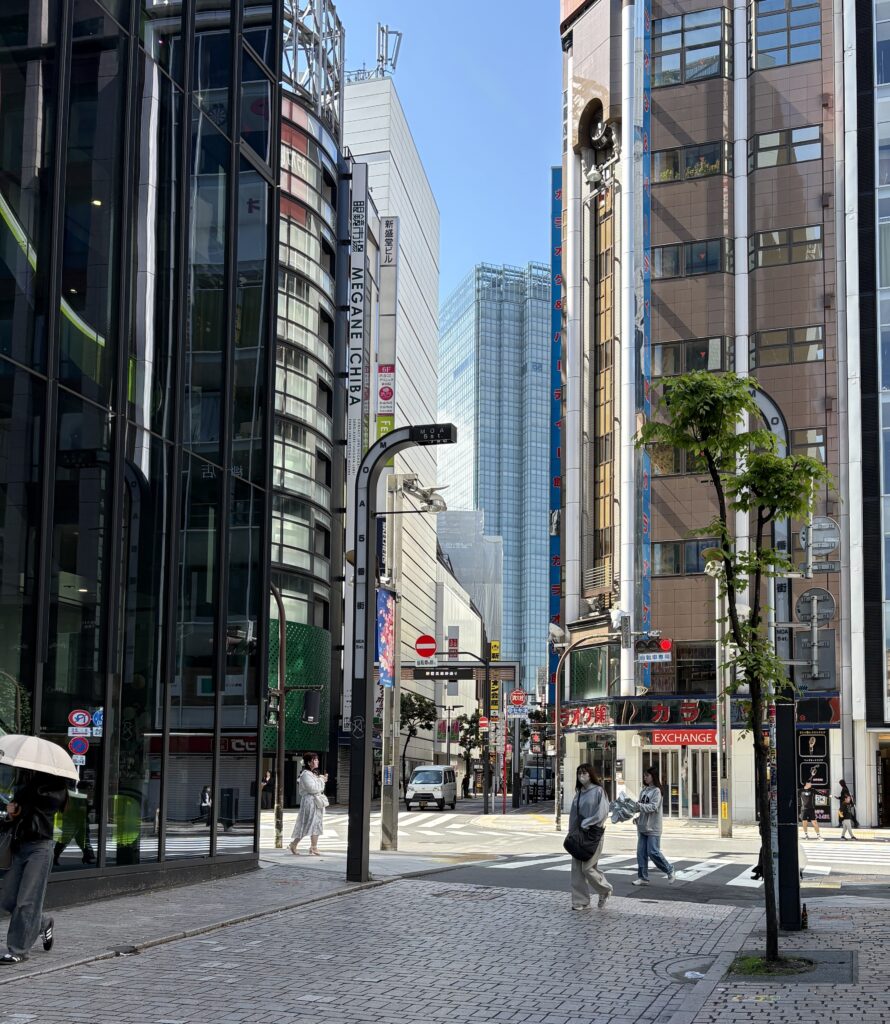
Final Thoughts on Choosing the Best Time to Visit Tokyo
Tokyo offers something unique in every season, from cherry blossoms in spring to vibrant festivals in summer, colorful foliage in autumn, and illuminated streets in winter.
While spring and autumn tend to be the most popular and comfortable times to visit, ultimately, the best time depends on your interests, budget, and tolerance for crowds.
Use this guide to weigh the pros and cons of each season and tailor your visit to what matters most to you, whether that’s snagging cherry blossom views, finding the best travel deals, or experiencing Tokyo’s cultural calendar at its peak.
Overall, Tokyo’s personality shifts with the seasons, offering new perspectives and experiences each time you return.
Keep an eye on local festivals and special events when planning your dates—they can transform a good trip into something truly unforgettable!
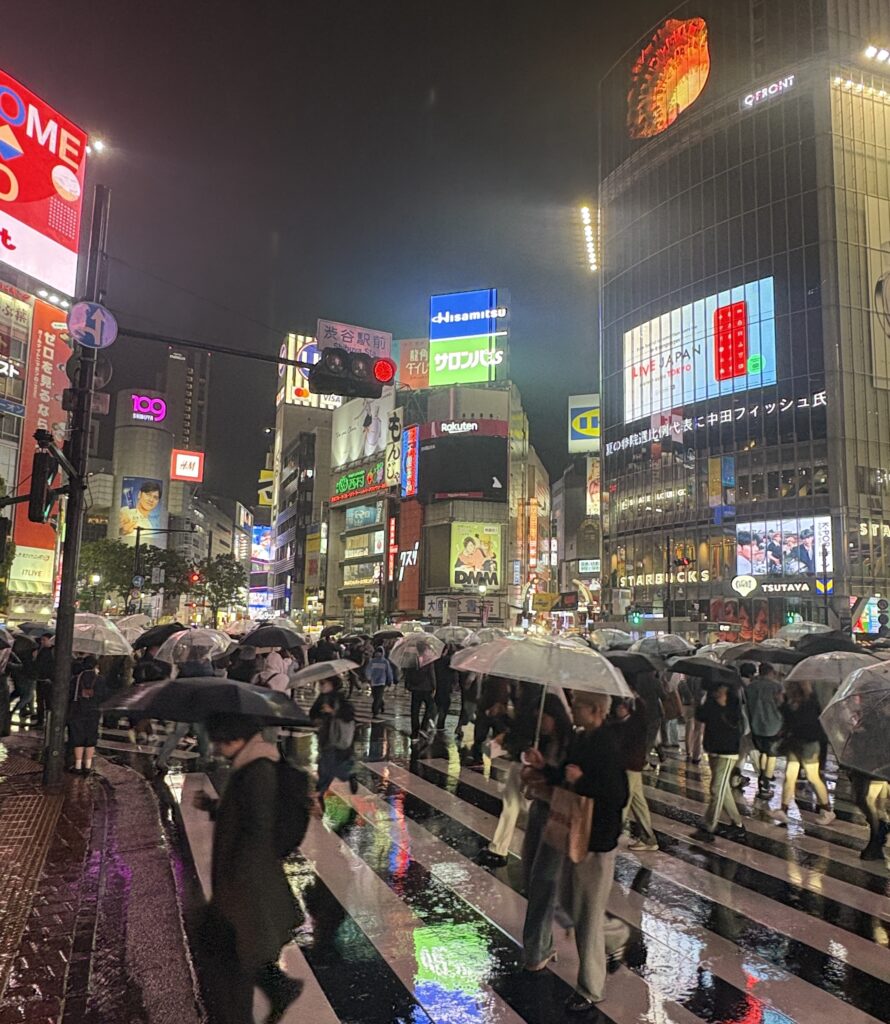
What is the cheapest month to visit Tokyo?
Generally, January and February are the least expensive months to visit. Flights and hotels tend to be cheaper as it’s the low season following the New Year holiday.
When is cherry blossom season in Tokyo?
Tokyo’s cherry blossoms typically bloom from late March to early April, depending on the weather each year.
Is summer a good time to visit Tokyo?
Summer can be fun for festivals, but it’s hot, humid, and crowded. If you handle heat well and want to experience fireworks and street events, it’s worth considering.
How many days do you need in Tokyo?
Ideally, plan at least 5 days to see the major neighborhoods, visit top sights, and take a day trip.
What is the rainiest month in Tokyo?
June tends to be the wettest month due to the rainy season, known as tsuyu.

